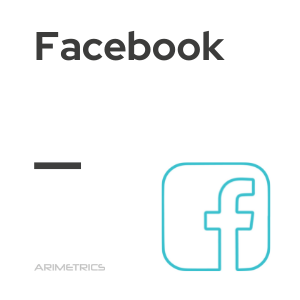Definition:
Facebook is a social network designed to connect people, facilitating interaction between friends, family, co-workers and people with common interests. With more than 2.8 billion monthly active users by 2023, it remains one of the world’s largest social platforms. On Facebook, users can interact through comments, private messages, participation in groups and pages, and through live video broadcasts via Facebook Live.
Origin and evolution of Facebook
Facebook was born in February 2004 by Mark Zuckerberg,who created the project with other fellow students from Harvard University such as Andrey McCollum, Eduardo Saverin, Chris Hughes and Dustin Moskovitz. The project arose with the idea of creating a new way of communicating day by day with the students of the university, although in a very short time it was opened to any user with email. It then began its exponential growth, which has lasted until today:
- 2004: Launch of “TheFacebook” at Harvard. Soon expanded to other Ivy League universities.
- 2005: The “The” is dropped from the name, becoming “Facebook”. The network is opened to high school students and then to anyone over the age of 13 with a valid email address.
- 2006: Facebook introduces the News Feed, a feature that revolutionized how users interact with content.
- 2007: Launches the Facebook application platform, allowing third-party developers to create applications and games.
- 2012: Facebook goes public and acquires Instagram, expanding its presence in the visual social networking arena.
- 2014: Purchases WhatsApp, strengthening its position in instant messaging.
- 2016: Introduces Facebook Live, allowing users to stream live video.
- 2021: Announces corporate name change to Meta Platforms, Inc. reflecting a focus on metaverse development.
Facebook Features
Facebook offers a variety of functionalities that allow users to interact in multiple ways:
- Friend Finder: Allows you to locate friends in the social network and send friend requests.
- Messenger: A stand-alone chat application that facilitates communication between users.
- Groups: Spaces where people with common interests can share messages, conversations and images.
- Pages: Similar to groups, but generally managed by companies, entities or public figures.
- Biography: Each user has a section for posting updates, where their friends can interact.
- Reaction buttons: In addition to “Like”, users can express emotions with a variety of reactions.
- Marketplace: A platform to buy and sell items locally.
- Facebook Watch: A video-on-demand service that offers original content shared by users.
- Games and applications: Facebook offers a wide range of games and applications that can be used without leaving the platform.
The role of the Community Manager and Facebook
The emergence of Facebook as one of the most influential social networks has been a key factor in the development of the community manager role. As companies began to recognize the potential of Facebook to connect with their audiences in a direct and personal way, the need to manage these interactions in a professional manner became evident.
The community manager is responsible for building, managing and moderating online communities, ensuring that communication between the brand and its followers is effective and positive. On Facebook, this includes managing company pages, creating engaging content, responding to comments and messages, and monitoring online reputation.
Over time, community management has expanded to include analyzing engagement metrics, planning content strategies, and collaborating with other marketing teams to align digital efforts with business objectives. Facebook, as a platform that facilitates real-time interaction and offers detailed analytical tools, has been instrumental in the evolution of this professional role.
Facebook Advertising
Facebook Ads is Facebook’s advertising platform that allows businesses to create targeted ads within the social network. Leveraging the vast amount of demographic and behavioral data that Facebook collects from its users, advertisers can customize their campaigns to reach people with specific interests, locations and behaviors.
The platform offers a variety of ad formats, including image, video, carousel, slideshow and collection ads, allowing brands to present their products and services in an engaging and dynamic way. In addition, Facebook Ads integrates with Instagram, further expanding the potential reach of ad campaigns.
Facebook Ads also provides analytical tools that allow advertisers to measure the performance of their campaigns in real time. Detailed reports provide information on key metrics such as reach, impressions, clicks and conversions, making it easy to optimize campaigns to improve results.

